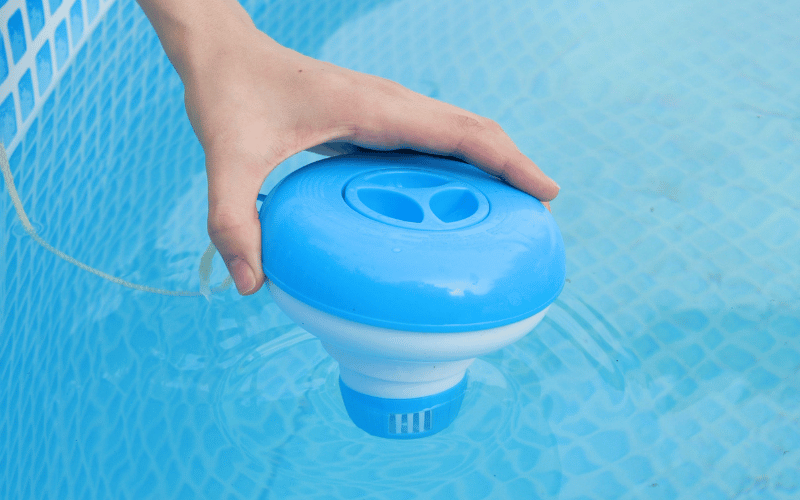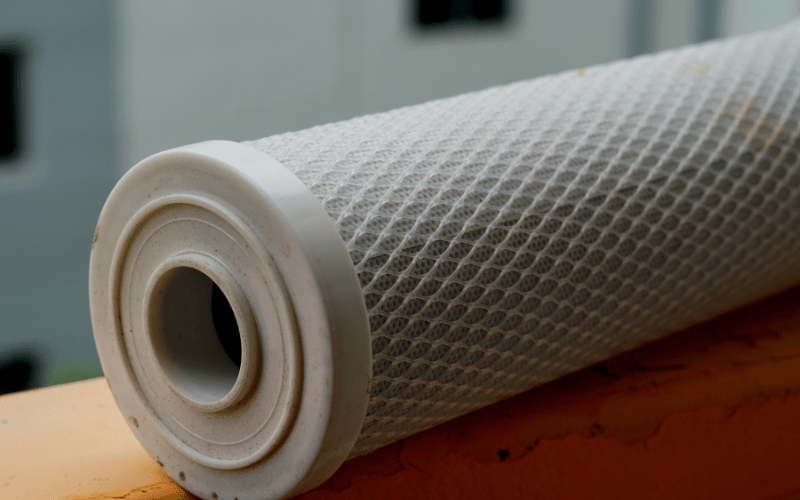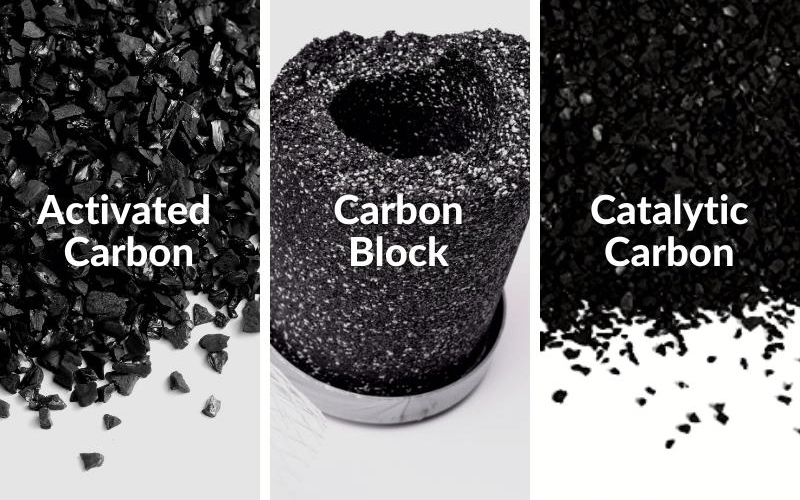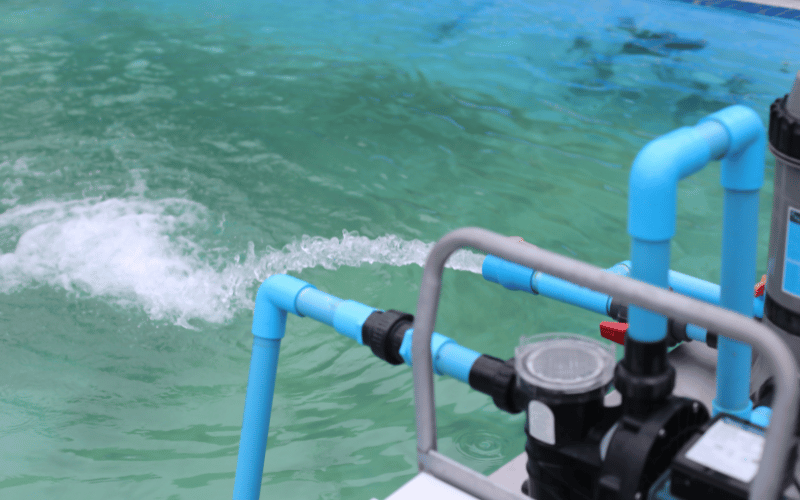Clean, safe water is essential for healthy living. Water disinfection plays a critical role in eliminating harmful bacteria, viruses, and other pathogens. Municipal water suppliers often use chemicals like chlorine and chloramine to ensure public safety. While effective, these disinfectants can leave behind unwanted residues that affect taste, smell, and water quality.
Removing chlorine and chloramine matters for various reasons. Many people want pure, great-tasting water for drinking or cooking. Aquarium owners need water free of chemicals to protect sensitive fish and aquatic life. Brewers rely on chemical-free water to maintain the integrity of their craft beverages. Each application demands special attention to ensure safe and optimal results.
This guide explores practical ways to eliminate these chemicals effectively. You’ll learn about sustainable and eco-friendly techniques that cater to different needs. By the end, you’ll understand how to choose the best method for your situation without harming the environment.
Table of Contents
ToggleUnderstanding Chlorine and Chloramine
Chlorine and chloramine play significant roles in municipal water treatment. Both are used to disinfect water, ensuring it is safe for public consumption by killing harmful bacteria and pathogens. However, their presence poses challenges for industries, especially those requiring pure, chemical-free water.
Chlorine is a highly reactive chemical often used due to its effectiveness and affordability. It has a strong oxidizing ability, which makes it efficient in destroying microorganisms. Chloramine, on the other hand, is a compound created by combining chlorine with ammonia. It is less reactive than chlorine but remains in the water longer, making it suitable for extended disinfection.
Key Differences in Chemical Properties
The primary difference between chlorine and chloramine lies in their chemical behavior. Chlorine reacts quickly with other substances, leading to faster disinfection but also resulting in by-products, such as trihalomethanes (THMs), which can impact water quality. Chloramine’s slower reaction rate reduces the formation of THMs, but its stability can make it harder to remove from water compared to chlorine.
This divergence in properties creates distinct challenges for those in industrial filtration. Understanding the unique characteristics of each chemical is crucial when selecting the appropriate filtration techniques.

Challenges and Impacts
The presence of chlorine and chloramine can significantly affect health, taste, and equipment life. For example, chlorine can leave an unpleasant odor and flavor, particularly in food and beverage applications. Similarly, chloramine can impart a noticeable chemical taste that impacts the final product’s quality.
From an environmental and equipment perspective, both chemicals can be corrosive. Chlorine’s aggressive nature can damage pipes, boilers, and other equipment, leading to costly maintenance. Chloramine, though milder in corrosiveness, still poses long-term risks to sensitive materials such as rubber seals and membranes.
By understanding these challenges, you’ll be better equipped to select the right method for removing these chemicals, maintaining the integrity of your operations while being environmentally responsible.
Eco-Friendly Chlorine and Chloramine Removal Methods
When it comes to managing chlorine and chloramine in industrial processes, environmentally conscious methods not only protect the planet but also safeguard equipment and operational efficiency. Here, I’ll walk you through practical, sustainable solutions to tackle these chemicals effectively.
Sunlight Exposure
Chlorine is a volatile compound that can naturally dissipate under sunlight. This method leverages the simple yet powerful process of natural evaporation. Under sunlight, the UV rays break down chlorine molecules in water, releasing them into the atmosphere.
To enhance this process, maximize surface exposure. Using shallow basins or containers increases the surface area of water, speeding up chlorine dissipation. Additionally, placing the water in direct sunlight for 24 to 48 hours usually ensures complete chlorine removal. This method is ideal for non-urgent cases or low-volume water treatment needs. However, note that this technique is less effective for removing chloramine, which decomposes more slowly under UV exposure.
Vitamin C Dechlorination
Vitamin C, also known as ascorbic acid, is a highly effective agent for neutralizing chlorine and chloramine in water. Its chemical properties allow it to interact directly with these compounds, breaking them down into harmless byproducts. This method is particularly well-suited for smaller-scale applications, such as temporary water storage or emergency filtration.
For practical use, ascorbic acid tablets or powder can be dissolved into water. For instance, adding one gram of vitamin C per 100 gallons of water is typically sufficient to neutralize chlorine. Additionally, sodium ascorbate—another form of Vitamin C—is less acidic and may be a better option when managing pH-sensitive systems. Despite its effectiveness, this solution is not ideal for large-scale industrial processes due to cost and practicality.
Reusable and Biodegradable Filtration Systems
For those looking for a long-term, sustainable solution, reusable and biodegradable filtration systems are the answer. These filters are designed to physically remove chlorine and chloramine while maintaining a minimal environmental footprint.
Activated carbon filters, for instance, can effectively adsorb chlorine and chloramine from water. Opt for systems specifically rated for chloramine removal, as not all carbon filters are equally effective. Regular replacement of the media will ensure ongoing filtration efficiency. Some modern systems also include biodegradable components, reducing waste and further aligning with eco-friendly objectives.
By incorporating these methods, you can successfully manage chlorine and chloramine while upholding environmental stewardship as a priority. Each approach has its place depending on the operational scale and urgency of your needs, allowing you to make informed decisions that benefit both your processes and the planet.

Advanced Removal Technologies for Home and Industry
Effectively managing chlorine and chloramine requires precision and careful selection of advanced removal technologies. Here, we discuss proven methods and emerging innovations that cater to both residential and industrial needs. Each of these solutions brings unique strengths to the table, allowing you to tailor them to your specific application.
Catalytic Activated Carbon (CAC)
Catalytic Activated Carbon (CAC) is a robust tool in the fight against chloramine. Unlike traditional activated carbon, CAC is chemically engineered to enhance reaction rates and deliver superior removal performance. Its effectiveness comes from its ability to break down chloramine into harmless byproducts without releasing secondary pollutants.
Mechanism and Advantages:
CAC operates through a process called catalytic reduction. When water flows through the CAC bed, chloramine molecules are captured and decomposed into nitrogen gas and chloride ions. The catalytic properties of the carbon enable these reactions to happen quickly and effectively. This is particularly advantageous in high-flow systems where contact time with media is limited.
Use Cases:
- Residential Applications: CAC filters are ideal for point-of-use systems in households, such as under-sink units or whole-house filtration setups. They eliminate chloramine that can affect the taste and odor of drinking water.
- Industrial Systems: Large-scale CAC systems are frequently employed in food and beverage production, where chloramine can compromise product quality. Their efficiency and scalability make them a go-to choice for industrial water treatment.

Reverse Osmosis (RO)
Reverse Osmosis, commonly known as RO, is a powerful purification system capable of removing both chlorine and chloramine. Its multi-stage filtration approach ensures thorough water treatment, offering consistent performance across diverse applications.
How RO Systems Work:
RO systems rely on a semipermeable membrane that acts as a barrier, allowing water molecules to pass through while rejecting dissolved solids, chloramines, and other impurities. Paired with pre-filters and post-filters, RO systems deliver unparalleled purity.
Considerations for Maintenance and Cost-Effectiveness:
Keep in mind that RO systems require regular maintenance to function at peak efficiency. This includes cleaning or replacing pre-filters, which protect the membrane from degradation caused by particulate buildup. Industrial operators should calculate energy costs and carefully monitor overall system pressure to maintain operational efficiency.
Emerging Innovations
As technology evolves, new solutions are emerging that push the boundaries of chloramine removal. These advancements offer exciting possibilities for both home users and large-scale facilities.
Ceramic Membranes:
Ceramic membranes, with their durability and ability to handle extreme conditions, are gaining attention in industrial water treatment. Unlike polymer membranes, these are highly resistant to fouling and chemical degradation, offering extended lifespans and reliability in harsh environments.
UV-Light Treatments:
Ultraviolet (UV) light systems are now being explored as an alternative or complementary solution to traditional methods. By leveraging high-energy UV light, these treatments disrupt chloramine bonds and sanitize water without the need for additional chemicals. Though this technology is still maturing, it shows great promise in applications demanding chemical-free solutions.
By understanding these advanced removal technologies, you can confidently choose methods that best align with your needs, ensuring efficient and reliable chloramine and chlorine management across diverse contexts.
Cost Comparison of Removal Methods
When selecting a removal method for chloramines and chlorine, cost is a critical factor to consider. Different technologies come with varying initial investments, ongoing maintenance requirements, and long-term operational expenses. To make informed decisions, it’s vital to evaluate these costs within the context of your specific application, whether industrial or residential.
Initial Costs of Popular Solutions
For residential applications, granular activated carbon (GAC) filters and reverse osmosis systems are often the go-to choices. GAC filters have a lower upfront cost, generally ranging between $50–$200 per unit, depending on size and quality. Reverse osmosis systems, on the other hand, typically require an initial investment of $200–$500 for residential setups.
Industrial applications present a different picture. High-capacity GAC systems can cost anywhere from thousands to tens of thousands of dollars, depending on their scale. Similarly, UV disinfection systems tailored for industrial use generally start around $10,000 and can reach six figures for large-scale operations.
Maintenance and Operational Expenses
Residential systems often involve periodic filter replacements, with GAC filters needing replacement every six months to two years, at a cost of $20–$100 per filter. Reverse osmosis systems have slightly higher maintenance expenses, as filters and membranes must be replaced regularly, adding $100–$300 annually.
For industrial systems, maintenance plays an even larger role in determining overall costs. High-capacity GAC systems require frequent media regeneration or replacement, which can quickly accumulate expenses. Industrial UV systems, while efficient, demand consistent lamp replacements and cleaning to ensure continued performance. On average, industrial-scale maintenance can range from $2,000 to $10,000 annually.
Long-Term Cost Considerations
When thinking about the long-term cost-effectiveness, it’s essential to account for energy consumption, system lifespan, and scalability. UV systems may have higher upfront costs but can offer lower energy consumption and chemical-free operation over time, especially in industrial contexts.
On the residential side, reverse osmosis systems generally provide long-term value due to their high efficiency in removing impurities. However, households with lower water demands may find GAC systems more economical.
Budget-Friendly vs. Premium Options
To help narrow down choices, here’s a quick guide:
|
Application |
Budget-Friendly |
Premium Option |
|---|---|---|
|
Residential |
GAC Filters ($50–$200) |
Reverse Osmosis ($200–$500) |
|
Small-Scale Industrial |
GAC Systems (<$10,000) |
UV Systems ($10,000–$50,000) |
|
Large-Scale Industrial |
GAC Systems ($10,000+) |
UV Systems ($50,000+) |
By aligning your budget with the proper technology, you can ensure cost-efficient chlorine and chloramine removal tailored to your specific needs. Consider whether upfront or long-term savings hold greater priority for you.
Tailored Solutions for Specific Needs
When it comes to chlorine and chloramine removal, a one-size-fits-all approach rarely works. Each application comes with unique requirements, and selecting the right system is essential for optimal results. Below, I’ve broken down different use cases with actionable advice to help you make an informed decision.
Drinking Water Filtration
Ensuring safe, clean drinking water begins with understanding whether a whole-house system or a point-of-use filter suits your needs better. Whole-house systems, such as GAC filters, are ideal for treating water entering your home entirely, ensuring every faucet delivers chlorine-free water. This is particularly important for larger households or properties with multiple bathrooms.
For smaller families or renters, point-of-use systems like reverse osmosis units offer an effective and budget-friendly solution. Choose a system with the right flow rate for your consumption needs—typically measured in gallons per day (GPD). For households with high water usage, a higher GPD rating ensures you won’t run out of filtered water when it’s needed most.
Aquariums and Fishkeeping
Chloramine poses a significant threat to aquatic life, and as an expert, I can attest that untreated water can quickly turn a healthy tank into a toxic environment. Simple water conditioners may neutralize chlorine effectively, but for chloramine, a specialized de-chlorinator is essential.
For advanced aquarists managing high-value or sensitive species, consider investing in a pre-filtration system using GAC technology alongside high-quality de-chlorinators. This redundancy ensures chloramine is entirely removed, keeping your fish safe from harm.
Brewing and Food Production
If you’re in the brewing or food production industry, chlorine and chloramine aren’t just contaminants—they’re flavor killers and fermentation disruptors. Even trace amounts can lead to off-flavors, especially in craft beer or artisanal products where purity is paramount.
To ensure the best results, start with a dedicated pre-treatment system. A combination of carbon filtration and reverse osmosis works well for most applications. If carbon filters alone are insufficient based on your municipal water quality, blending them with UV filtration gives you an extra layer of protection while maintaining water integrity.
Showering and Skin Sensitivity
For those with chlorine sensitivity or skin conditions like eczema, reducing exposure during daily showers is vital. Chlorine can strip natural oils from your skin, leaving it dry and irritated. Fortunately, the solution is simple—install a high-performance showerhead filter designed to eliminate chlorine and chloramine.
If you prefer a higher-end solution, consider connecting your bathroom plumbing to a point-of-entry system. This delivers chlorine-free water not just to your shower but to your entire home, offering an unparalleled level of comfort and protection for sensitive users.
By tailoring your filtration solutions to your unique needs, you’re investing not just in cleaner water but in long-term efficiency, safety, and satisfaction. Don’t underestimate the role of proper system selection in achieving these results.
Real-Life Applications and Success Stories
Chloramine removal is not just a theoretical concern—it is a tangible necessity across various industries and residential settings. When implemented correctly, tailored filtration systems can transform water quality, ensuring it meets the exacting standards demanded by homes or complex industrial operations.
Case Studies in Key Industries
Breweries
Breweries rely heavily on water as a primary ingredient, requiring it to be free of chloramine to preserve the flavor and quality of their beverages. A brewery in the Midwest successfully addressed off-tasting products stemming from chloramine by integrating a granular activated carbon (GAC) filtration system, combined with catalytic carbon. This dual-layer approach effectively neutralized chloramine, allowing the brewery to maintain consistency in their craft beer production while reducing water wastage.
Healthcare
Hospitals and healthcare facilities cannot afford compromises in water quality, especially when it affects patient safety. A large urban hospital implemented a point-of-entry reverse osmosis (RO) system to remove chloramine, ensuring sterile water for cleaning surgical instruments and preparing intravenous solutions. The facility reported a 30% improvement in equipment longevity and a significant reduction in water-related complications from their day-to-day operations.
Municipal Water Supplies
Municipalities play a pivotal role in delivering clean, treated water to thousands of residents. Tackling chloramine contamination at scale requires robust infrastructure. A city in the Pacific Northwest adopted a high-capacity, multi-stage filtration system featuring ion exchange and carbon adsorption. This upgrade improved community satisfaction while enabling the city to meet evolving regulatory standards for drinking water.
Residential Success Stories
Homeowners have also embraced sustainable solutions to eliminate chloramine effectively. One family invested in a whole-house filtration system with catalytic carbon components, visibly improving water clarity and eliminating odor from their taps. Another homeowner, after multiple skin irritation issues, moved to an under-sink filtration system paired with a dedicated shower filter. Both households reported life-changing results, with lower maintenance requirements and greater confidence in their daily water use.
Highlighting Innovation in Large-Scale Operations
The future of chloramine removal lies in innovation, and many organizations are leading the charge. For instance, a water treatment plant handling over one million gallons daily integrated an advanced membrane bioreactor (MBR) system. By incorporating chloramine-specific pretreatment filters, they prolonged membrane lifespan and achieved higher efficiency with less frequent maintenance cycles. Such innovations not only optimize operational costs but also pave a new path for sustainable water management practices.
By understanding these real-life scenarios, you can better appreciate the importance of choosing the right system. The lessons learned from these success stories should serve as a guide to tackling your own water filtration challenges.
Long-Term Maintenance and Sustainability Tips
Achieving optimal performance from your filtration system requires a proactive approach. It’s not just about installing the system; it’s about nurturing it to maintain peak efficiency while mitigating long-term costs. Below, we break down fundamental care strategies and sustainability practices that ensure your system operates smoothly over the years.
Care and Replacement Schedules for Filters
Filters are the backbone of any water filtration system, and their maintenance revolves around timely inspection and replacement. Start by adhering to the manufacturer’s recommended replacement intervals, but always monitor your system’s output closely. Decreased flow rate or changes in water quality can signal that a filter is nearing the end of its lifecycle.
Establishing a routine inspection schedule is crucial. Check pre-treatment filters, membranes, and any additional filtration mediums regularly. For industrial operations, consider implementing automated monitoring systems that provide real-time alerts for pressure drops, which can indicate clogging or fouling. Always keep spare filters on-site to avoid downtime during replacements.
Eco-Conscious Disposal Practices for Used Filtration Materials
Sustainability in filtration starts with thoughtful disposal of spent materials. Many used filters, depending on their composition, are classified as non-biodegradable waste. To minimize environmental impact, identify recycling programs that accept filter cartridges or membranes.
For filters exposed to hazardous contaminants, work with specialized waste management companies to ensure proper treatment and disposal. When possible, opt for filter products made from recyclable or eco-friendly materials. By integrating these practices into your operations, you balance efficiency with environmental responsibility.
Additional Water Quality Improvements for Continued Health and Safety
Filters effectively remove contaminants, but occasionally, buildup or system inefficiencies can compromise water quality over time. To maintain consistent results, consider incorporating secondary measures such as UV sterilization or advanced oxidation processes. These technologies act as supplementary safeguards by neutralizing pathogens or organic compounds that might pass through the primary filtration system.
Additionally, routinely test your water quality at key output points. Even the most well-maintained systems can experience performance fluctuations. Testing allows you to identify subtle changes and address them before they become significant issues. This ensures the water remains safe and compliant with industry standards.
By following these maintenance guidelines, you’ll not only extend the lifespan of your filtration system but also uphold a commitment to operational sustainability and water safety.
Frequently Asked Questions (FAQs)
Q: How long does it take for chlorine or chloramine to naturally dissipate in tap water?
A: Chlorine typically dissipates more quickly than chloramine when exposed to air. Chlorine may evaporate within 24-48 hours depending on the volume of water and environmental factors such as temperature and air circulation.
Chloramine, however, is far more stable. It can remain in tap water for several days unless actively removed through chemical treatment or filtration. If you need faster removal, consider using a filtration system equipped with catalytic activated carbon (CAC).
Q: What are the health risks of long-term exposure to chloramines?
A: Long-term exposure to chloramines in drinking water may cause skin and eye irritation in individuals with sensitivity. Additionally, chloramines can react with organic matter in water to produce disinfection by-products, which may pose health risks over time if consumed in high concentrations.
For individuals with underlying conditions, such as kidney disease or respiratory sensitivity, chloramine exposure might exacerbate their symptoms. To mitigate these risks, consistently ensure your water filtration system targets both chloramine and its by-products effectively.
Q: Do budget water filters effectively remove chloramine?
A: Most budget water filters are not designed to effectively remove chloramine. Basic activated carbon filters may reduce chlorine but often struggle with chloramine due to its stability.
For reliable chloramine removal, look for filters that explicitly use catalytic activated carbon (CAC), as it is specifically designed to break down chloramine molecules. When in doubt, consult the filter’s specifications or seek professional guidance to avoid ineffective solutions.
Q: What is the difference between granular activated carbon (GAC) and catalytic activated carbon (CAC)?
A: Granular activated carbon (GAC) is a common filtration medium used to reduce chlorine and some organic contaminants. It utilizes adsorption to trap impurities. However, its efficiency against chloramine is limited.
Catalytic activated carbon (CAC) is chemically enhanced to target chloramine removal specifically. It not only absorbs contaminants but also catalyzes a chemical reaction to break down chloramine effectively. For advanced water treatment needs, CAC is the superior choice when dealing with complex disinfectants like chloramine.
Q: Can boiling water eliminate chloramine?
A: Boiling water is an effective method to remove chlorine but not chloramine. Chloramine’s chemical structure is more resistant to heat and will not dissipate through boiling alone.
To remove chloramine, consider investing in a high-quality filtration system or using water treatment additives such as sodium bisulfate, which neutralizes chloramine through a chemical process.
Q: How can I test for chlorine or chloramine in my water supply?
A: Testing for chlorine or chloramine is straightforward with the right tools. Use a water test kit specifically designed for free chlorine and total chlorine. Subtract the free chlorine level from the total chlorine level; the difference equals the chloramine concentration.
These kits are readily available online or at hardware stores. Alternatively, you can hire a professional water testing service to provide precise results and recommendations based on your findings.
Conclusion
Effectively removing chlorine and chloramine from your water supply begins with choosing the right treatment methods. Activated carbon filtration excels at eliminating both contaminants, offering a reliable, cost-efficient solution for most applications. For more stubborn chloramine removal, catalytic carbon stands out, breaking down bonds at an accelerated rate. Reverse osmosis further enhances water quality by removing a wide spectrum of impurities alongside chlorine and chloramine, making it an excellent choice for comprehensive purification.
When selecting a solution, always consider your specific water usage, budget, and desired level of filtration. A custom approach ensures better results and long-term satisfaction. Prioritize sustainable and effective water treatment practices to protect not just your operations or household supply but also the environment. The right strategy will yield cleaner, safer water, ensuring peace of mind every step of the way.


